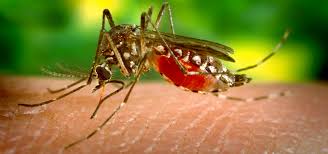Researchers from the University of Illinois Urbana-Champaign in the US have made an important breakthrough in inventing a device to detect the Zika virus in the blood with the help of a clip to be attached to a smartphone
As seen during the time of the COVID-19 pandemic, rapid, simple, and accurate identification of the virus have proved to be crucial for detecting and preventing the spread of infection. Unfortunately, laboratory-based methods often require trained personnel and have complex procedures.
Zika virus infection is currently detected through polymerase chain reaction tests performed in a laboratory. This can increase the genetic material of the virus. This makes it easier for scientists to detect it.
What is Zika Virus?
Zika virus is mainly transmitted by Aedes aegypti mosquitoes. Although the disease is largely asymptomatic or results in mild symptoms in adults. The patient has a rash on the skin, fever, swelling in the eyes, joint pain etc. If mothers are infected during early pregnancy, it causes developmental disorders in newborns.
How can I know
“We designed a clip-on device so that the rear camera of the smartphone can see the cartridge,” said Brian Cunningham of the University of Illinois at Urbana-Champaign. Cunningham said that when there’s a positive response, you see tiny green blooms of fluorescence that eventually fill the whole with green light.
In the new study, researchers used loop-mediated isothermal amplification to detect the virus in blood samples using an approach suitable for point-of-care clinics. Whereas PCR requires 20 to 40 repeated temperature changes to amplify the genetic material, LAMP only requires a single temperature of 65 °C, making it easier to control.
In addition, PCR tests are very sensitive to contaminants, especially other parts of the blood sample. As a result, the sample is purified before it can be used. LAMP, on the other hand, does not require any such purification step.
A cartridge, which contains the reagents needed to detect the virus, is inserted into the device to be tested, while the device is clipped to the smartphone. Once the patient ingests a drop of blood, a set of chemicals breaks down the virus and blood cells within five minutes. A heater under the cartridge heats it up to 65°C.
The second set of chemicals then amplifies the viral genetic material and if the blood sample contains the Zika virus, the fluid inside the cartridge turns bright green. The whole process takes 25 minutes.
Researchers are now developing similar tools to simultaneously detect other mosquito-borne viruses and are working on making the devices even smaller.












